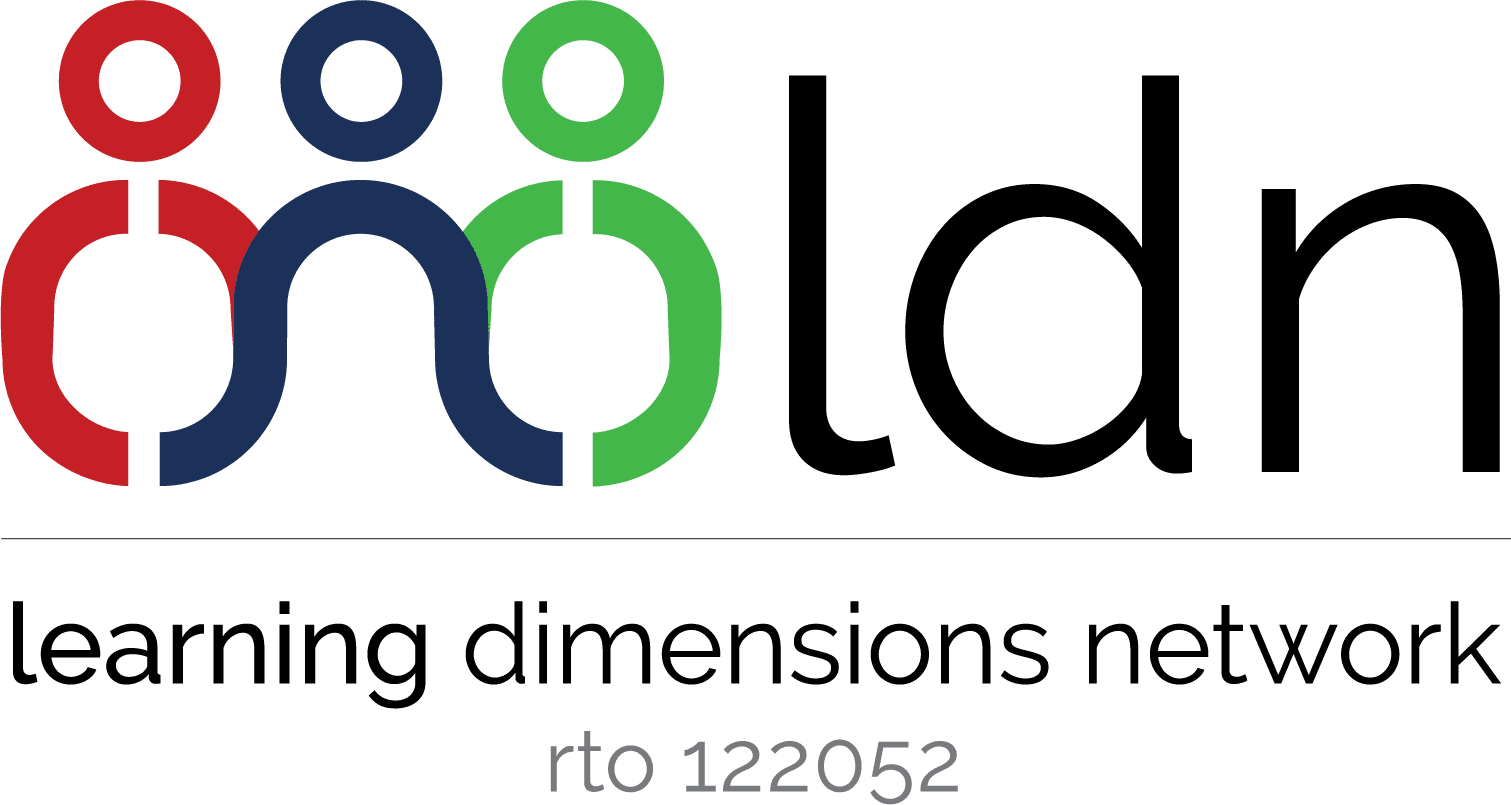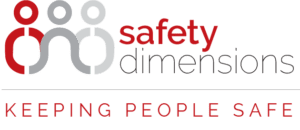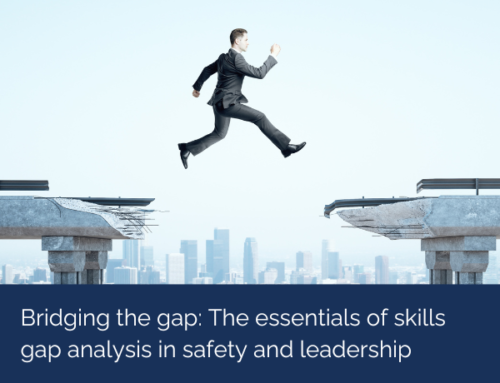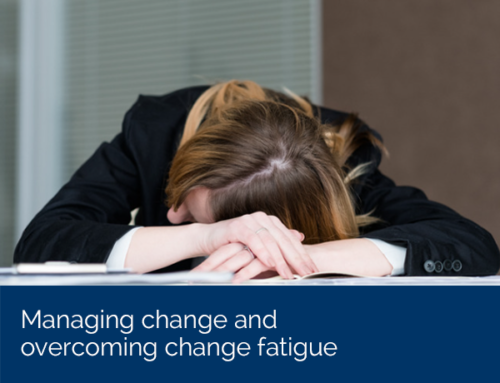As the recent tragic death of an Ernst & Young employee in their Sydney office highlights, there is a need for organisations to ensure they are managing psychosocial hazards in the workplace.
According to a Diversity Council Australia report, 42% of workers who had reported their mental health had been poor in the past 12 months had not discussed their mental health with anyone in the workplace. Furthermore, data from Safe Work Australia shows 9% of all serious workers compensation claims are for workârelated mental health conditions.
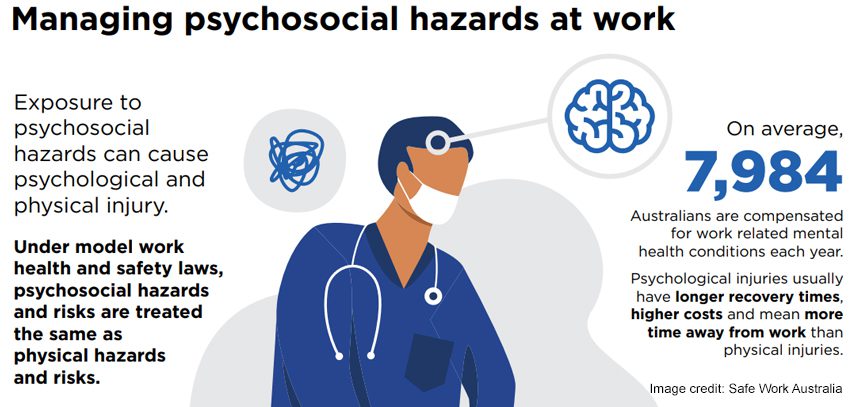
Psychosocial hazards are factors in the design or management of work that increase the risk of work-related stress and can lead to psychological or physical harm.
Psychosocial hazards at work can include:
- job demands
- low job control
- poor support
- lack of role clarity
- poor organisational change management
- inadequate reward and recognition
- poor organisational justice
- traumatic events or material
- remote or isolated work
- poor physical environment
- violence and aggression
- bullying
- harassment, including sexual harassment, and
- conflict or poor workplace relationships and interactions.
Employees are likely to be exposed to a combination of psychosocial hazards. Some hazards might always be present at work, while others only occasionally. There is a greater risk of work-related stress when psychosocial hazards combine and act together, so employers should not consider hazards in isolation.
Psychosocial hazards do not necessarily reveal the causes of work-related stress. Causes are likely to be specific to the employee, work or workplace. Senior management should identify which psychosocial hazards negatively affect employees’ health and well-being and take appropriate action to control the impact of those hazards.
Visible signs of psychosocial stressors can include missed deadlines, inability to concentrate, reduced quality of work, frequent absences, irritability, withdrawn behaviour and difficulty participating or engaging with co-workers.
Invisible signs of psychosocial stress can include fatigue, difficulty breathing, panic attacks, anxiety, depression, unhealthy behaviors such as alcohol and drug abuse, poor dietary patterns, post-traumatic stress disorder (PTSD) and sleep disorders.
Physical injuries from psychosocial hazards can include musculoskeletal injury, chronic disease, and physical injury following fatigue-related workplace incidents.
The impact of psychosocial hazards can be difficult to identify in the workplace because not every employee shows visible signs of these stressors or be willing to share and talk about them.
How do psychosocial hazards cause harm?
Psychosocial hazards can create stress. Stress is the body s reaction when a worker perceives the demands of their work exceed their ability or resources to cope. Stress itself is not an injury but if it becomes frequent, prolonged or severe it can cause psychological and physical harm.
Despite some psychosocial hazards occurring rarely eg. abuse or violence at work, the stress itself from that hazard may be prolonged. For example, workers exposed to this abuse or violence are likely to experience stress if they perceive that the risks have not been controlled, even if an incident does not occur again.
On average, work-related psychological injuries have longer recovery times, higher costs, and require more time away from work.
Managing the risks associated with psychosocial hazards not only protects an organisation’s most important asset its workers and their wellbeing, but it also decreases the disruption associated with staff turnover and absenteeism and may improve broader organisational performance and productivity.
Under WHS law, a person conducting a business or undertaking (PCBU) must ensure, so far as is reasonably practicable, that workers and other persons are not exposed to risks to their psychological or physical health and safety. A PCBU must eliminate psychosocial risks in the workplace, or if that is not reasonably practicable, minimise these risks so far as is reasonably practicable.
Psychosocial hazards need to be afforded the same importance and equal priority to any other workplace risk.
SafeWork Australia has recently published its finalised national model WHS Code of Practice for managing psychosocial hazards at work.
To have legal effect in a jurisdiction, the model Code of Practice must be approved as a code of practice in that jurisdiction.
Check with your WHS regulator to find out if this Code of Practice has legal effect in your jurisdiction.
You can find key links to your state and territory regulators in this related blog post:
Amendments to WHS Regulations put mental health on equal footing with physical safety.
Mental Health Support
If you or a colleague are feeling depressed, stressed or anxious there are services to help.
Sources:
